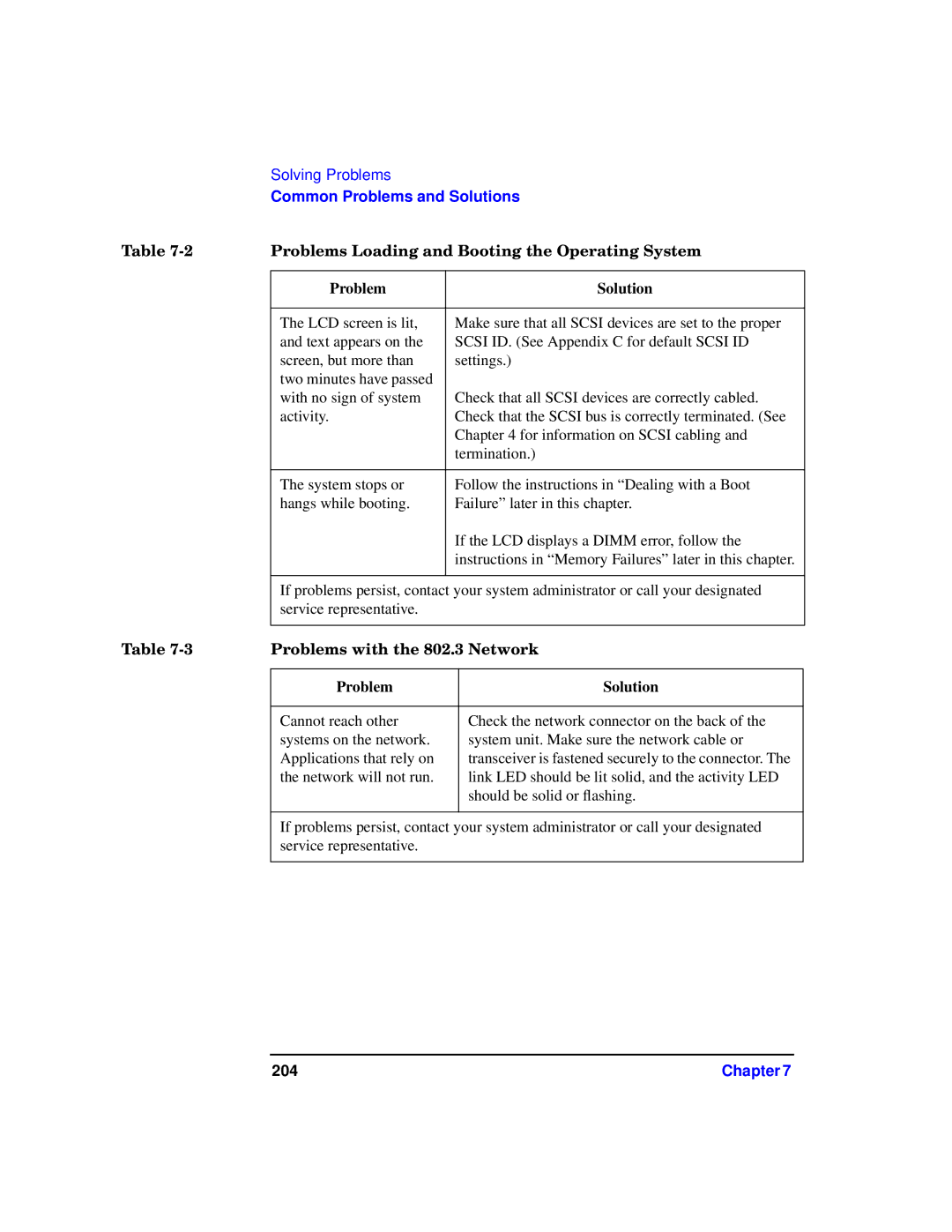
Solving Problems
Common Problems and Solutions
Table | Problems Loading and Booting the Operating System | |
|
|
|
| Problem | Solution |
|
|
|
| The LCD screen is lit, | Make sure that all SCSI devices are set to the proper |
| and text appears on the | SCSI ID. (See Appendix C for default SCSI ID |
| screen, but more than | settings.) |
| two minutes have passed |
|
| with no sign of system | Check that all SCSI devices are correctly cabled. |
| activity. | Check that the SCSI bus is correctly terminated. (See |
|
| Chapter 4 for information on SCSI cabling and |
|
| termination.) |
|
|
|
| The system stops or | Follow the instructions in “Dealing with a Boot |
| hangs while booting. | Failure” later in this chapter. |
|
| If the LCD displays a DIMM error, follow the |
|
| instructions in “Memory Failures” later in this chapter. |
|
|
|
| If problems persist, contact your system administrator or call your designated | |
| service representative. |
|
|
|
|
Table | Problems with the 802.3 Network | |
|
|
|
| Problem | Solution |
|
|
|
| Cannot reach other | Check the network connector on the back of the |
| systems on the network. | system unit. Make sure the network cable or |
| Applications that rely on | transceiver is fastened securely to the connector. The |
| the network will not run. | link LED should be lit solid, and the activity LED |
|
| should be solid or flashing. |
|
|
|
| If problems persist, contact your system administrator or call your designated | |
| service representative. |
|
|
|
|
204 | Chapter 7 |
